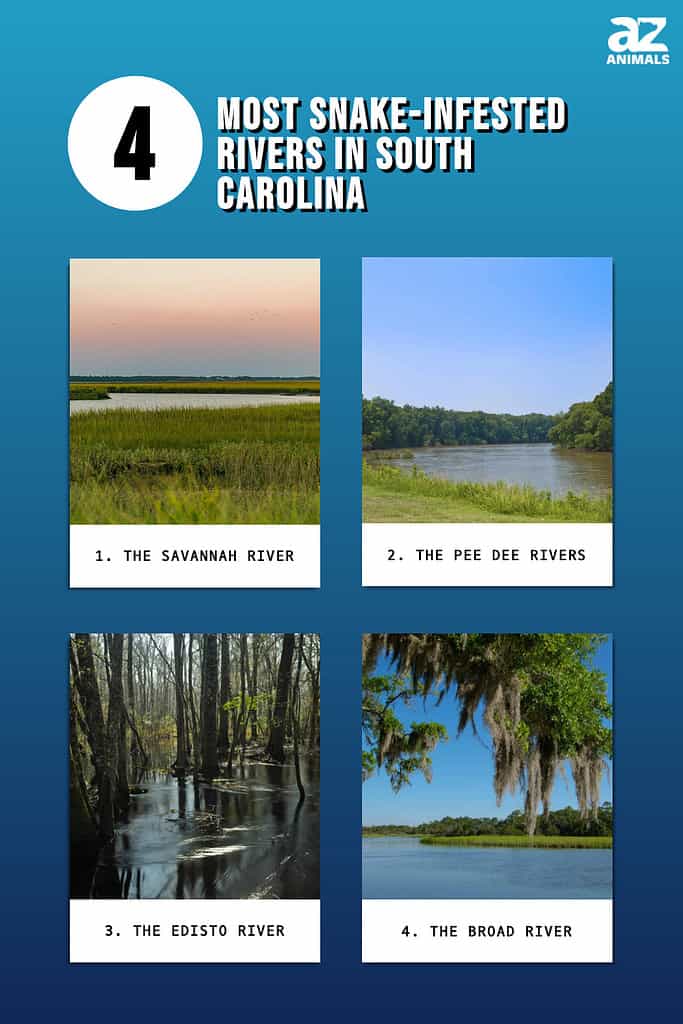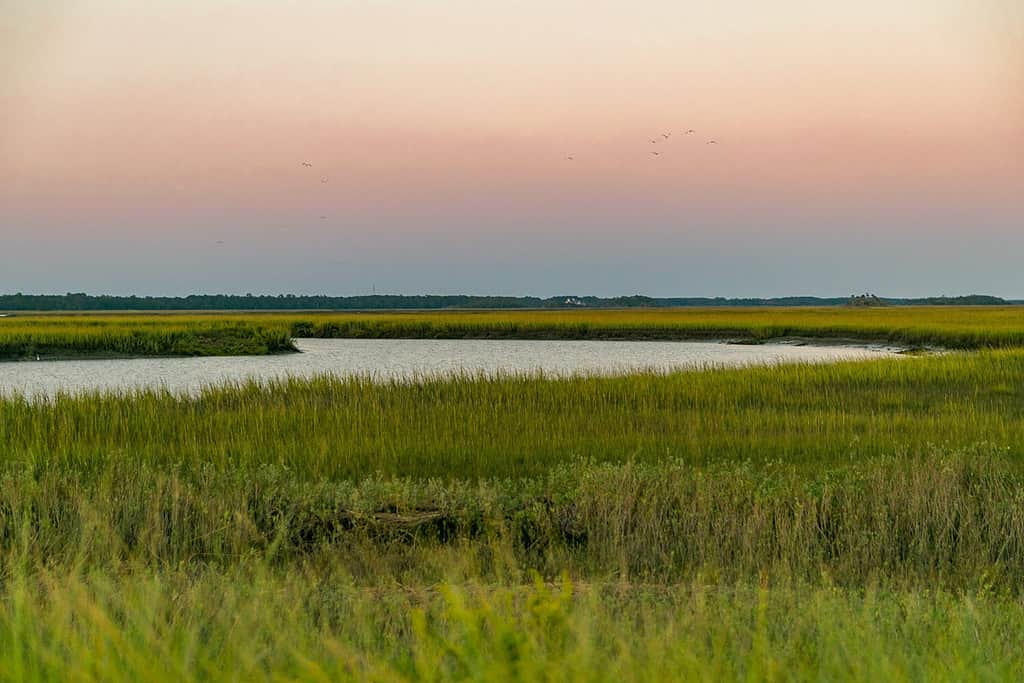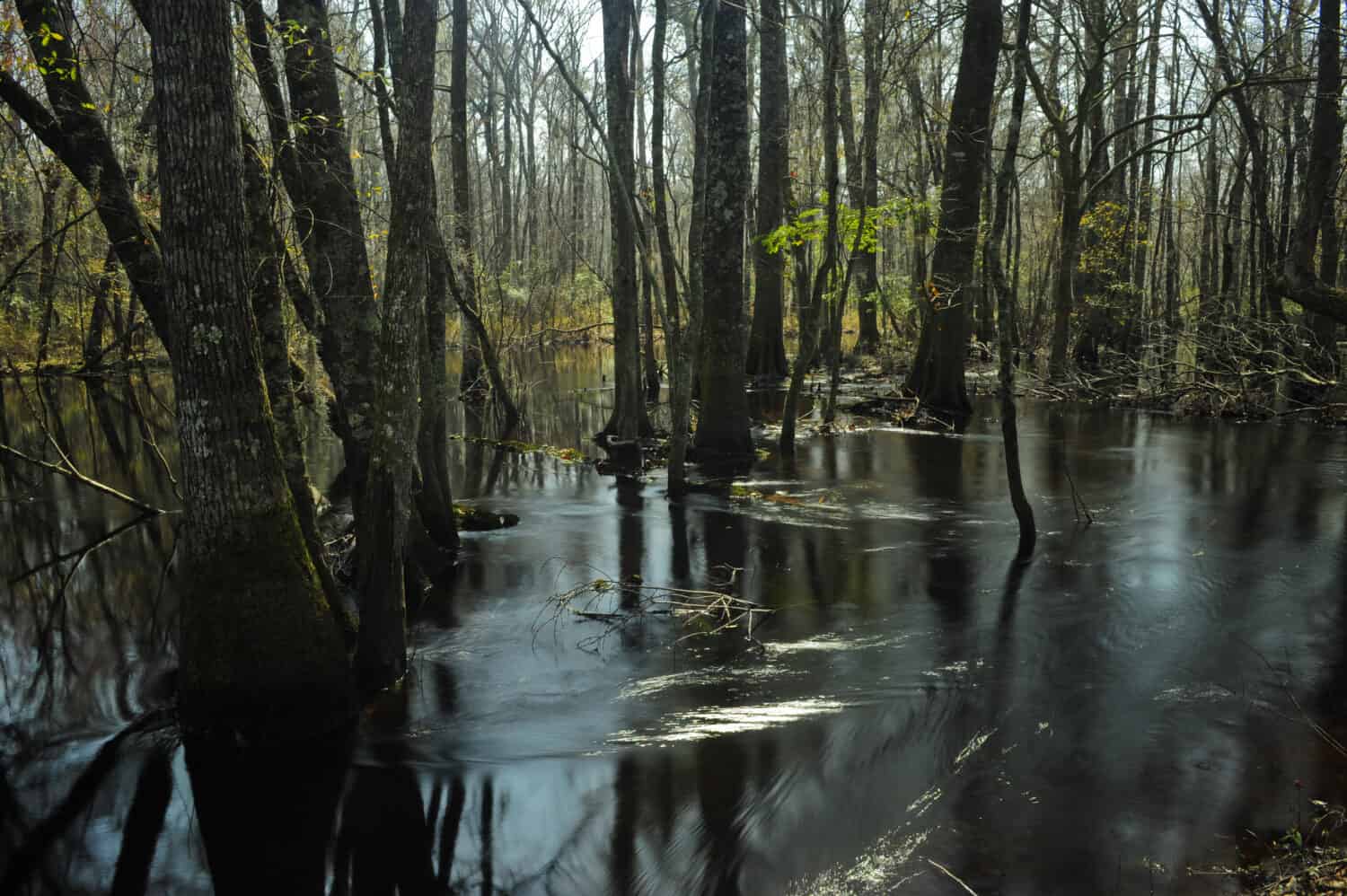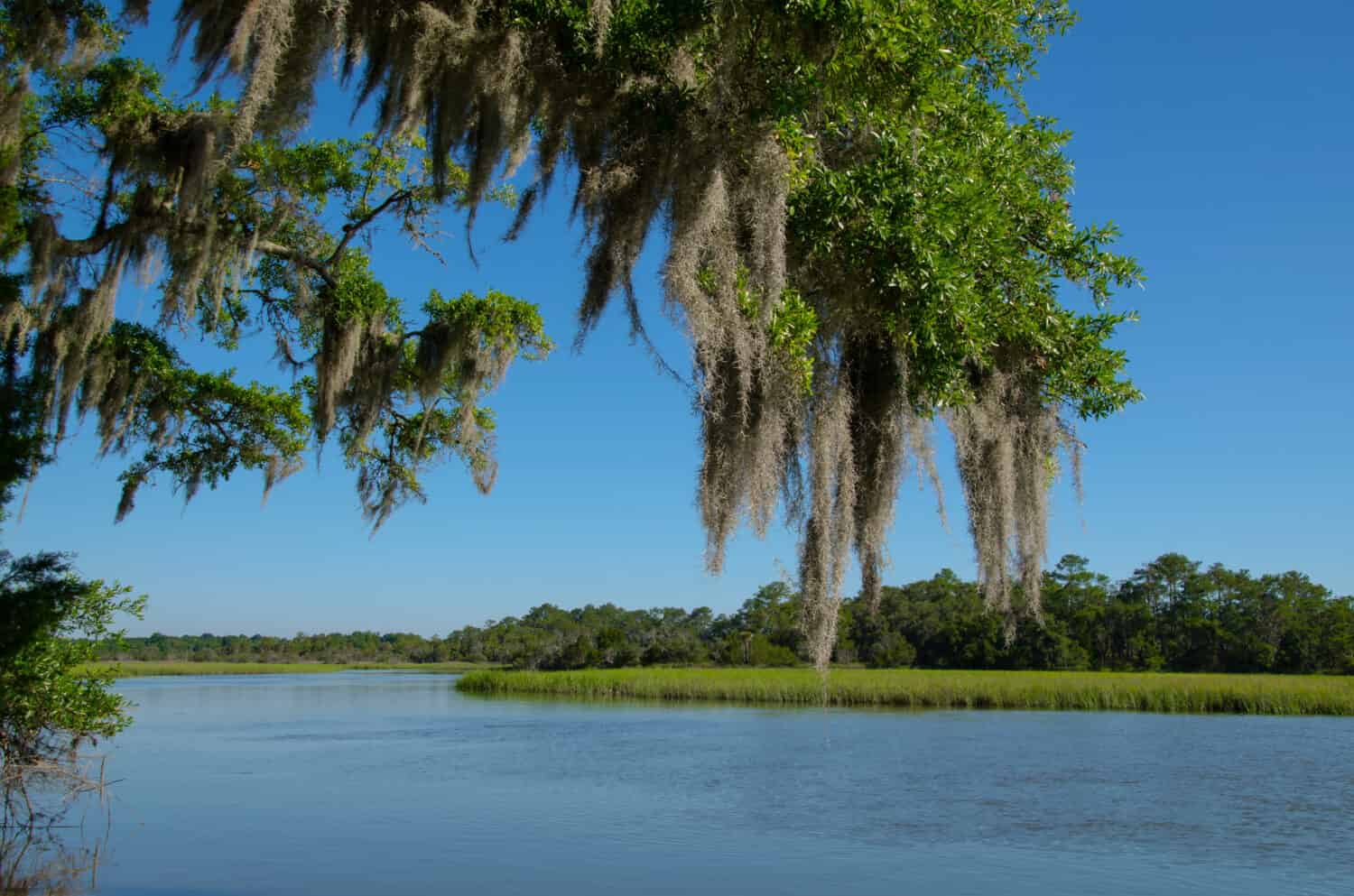
South Carolina is known for its barbecue, warm temperatures, and welcoming beaches. But did you know that it’s home to plenty of different species of snakes? The hot, humid climate, combined with the marshy, wet areas and grasslands that make up the Low Country, make an excellent home for serpents. The Piedmont, the hilly region at the edge of the Blue Ridge Mountains, also contains plenty of snakes. South Carolina has 38 different species of snakes, and they’re all native to the state! Let’s take a look at which rivers are home to the most snakes.

Many different kinds of snakes love these grasslands in South Carolina.
©Elizabeth Foley/Shutterstock.com
1. The Savannah River
The Savannah River is home to plenty of different species of snake. One dangerous serpent you might find here is the Copperhead. This species is the most venomous snake in the state. You can tell the Copperhead apart from others by its brown hourglass crossbands and over a pinkish or tan-colored background. These snakes enjoy the mountains as well as coastal hardwood floors.
They tend to live in grasslands, rolling pine hills, sandy coasts, and longleaf pine flatwoods. This means you might come across one at any point. The Savannah River, which borders Georgia, is home to these snakes and rat snakes. The black rat snakes have a telltale hint of white along their scales and are found in the mountains and Piedmont regions of central Georgia and South Carolina. You can find yellow rat snakes along the coast, and gray rat snakes tend to live in the Savannah River in Southern South Carolina.

You might stumble across a Copperhead on this river.
©Denton Rumsey/Shutterstock.com
2. The Pee Dee Rivers
The Little Pee Dee and Great Pee Dee rivers are home to the brown watersnakes. They’re various shades of brown with dark brown square blotches and a lighter belly. Though they tend to roam the Pee Dee rivers, you could come across one of these anywhere in the state. They enjoy life in flowing water, so rivers are their favorite spots. They’re very common snakes and are fantastic swimmers! Their bites are known to be especially painful, though they aren’t venomous.

Snakes enjoy the habitat that the Pee Dee rivers provide.
©Don Fink/Shutterstock.com
3. The Edisto River
Another harmless snake you might come across is the Garter snake. They’re well-adapted to living around people and can often be found in city parks, as well as suburban lawns and gardens. While it’s rare for them to bite, they will defecate and release a foul smell to defend themselves!
The Edisto River makes its way through a large part of the Lowcountry in South Carolina. Much of it is wet and marshy, making it a great home for serpents. Cottonmouths can also be found in palmetto thickets, pine forests, dune areas, and prairies, as well as slow-moving streams, swamps, marshes, ponds, and rivers. This snake is incredibly dangerous and venomous. They vibrate their tails and expose the white interior of their mouths when they hiss.

The tall grasses lend cover to local snakes.
©Serge Skiba/Shutterstock.com
4. The Broad River
Besides brown watersnakes, you will likely come across banded and northern watersnakes in the Broad River. You might also see Queen snakes, commonly confused with watersnakes due to similar coloration. Unlike watersnakes, though, these won’t typically bite you! Though banded watersnakes aren’t venomous, they give off an awful stench when threatened. Northern watersnakes make up the majority of these species found here and are often confused with copperheads due to the dark brown or reddish bands and blotches on their backs.

It can be hard to see serpents in this brown water.
©The Outdoorsy Lens/Shutterstock.com
The photo featured at the top of this post is © Michiel de Wit/Shutterstock.com
Thank you for reading! Have some feedback for us? Contact the AZ Animals editorial team.






